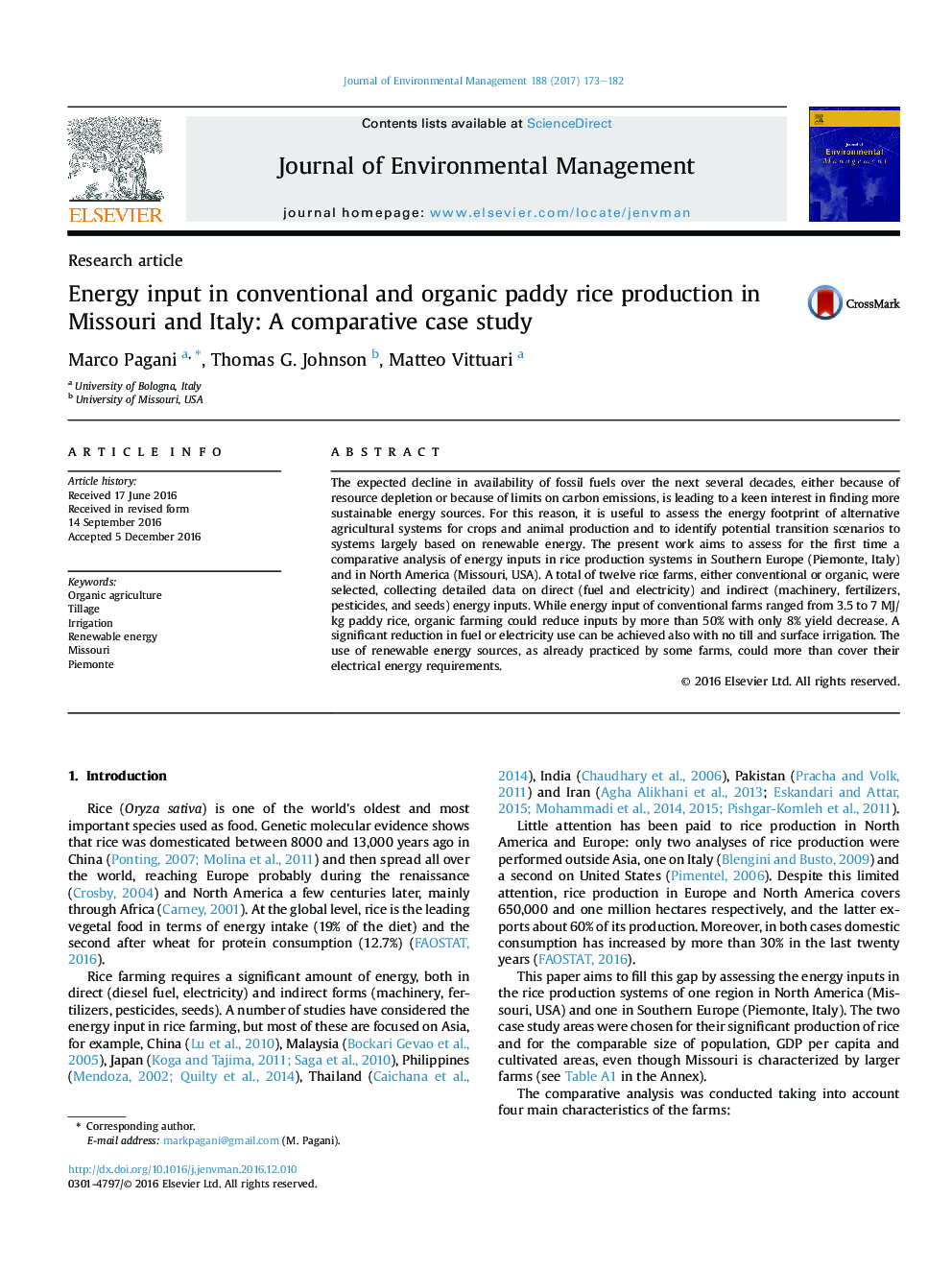| Article ID | Journal | Published Year | Pages | File Type |
|---|---|---|---|---|
| 5117135 | Journal of Environmental Management | 2017 | 10 Pages |
Abstract
The expected decline in availability of fossil fuels over the next several decades, either because of resource depletion or because of limits on carbon emissions, is leading to a keen interest in finding more sustainable energy sources. For this reason, it is useful to assess the energy footprint of alternative agricultural systems for crops and animal production and to identify potential transition scenarios to systems largely based on renewable energy. The present work aims to assess for the first time a comparative analysis of energy inputs in rice production systems in Southern Europe (Piemonte, Italy) and in North America (Missouri, USA). A total of twelve rice farms, either conventional or organic, were selected, collecting detailed data on direct (fuel and electricity) and indirect (machinery, fertilizers, pesticides, and seeds) energy inputs. While energy input of conventional farms ranged from 3.5 to 7Â MJ/kg paddy rice, organic farming could reduce inputs by more than 50% with only 8% yield decrease. A significant reduction in fuel or electricity use can be achieved also with no till and surface irrigation. The use of renewable energy sources, as already practiced by some farms, could more than cover their electrical energy requirements.
Related Topics
Physical Sciences and Engineering
Energy
Renewable Energy, Sustainability and the Environment
Authors
Marco Pagani, Thomas G. Johnson, Matteo Vittuari,
